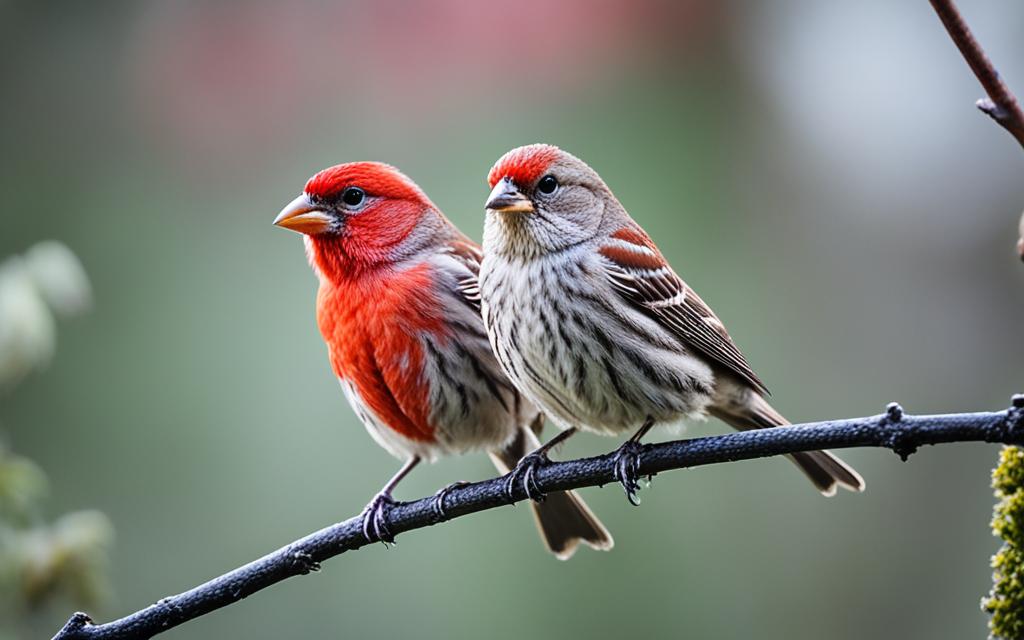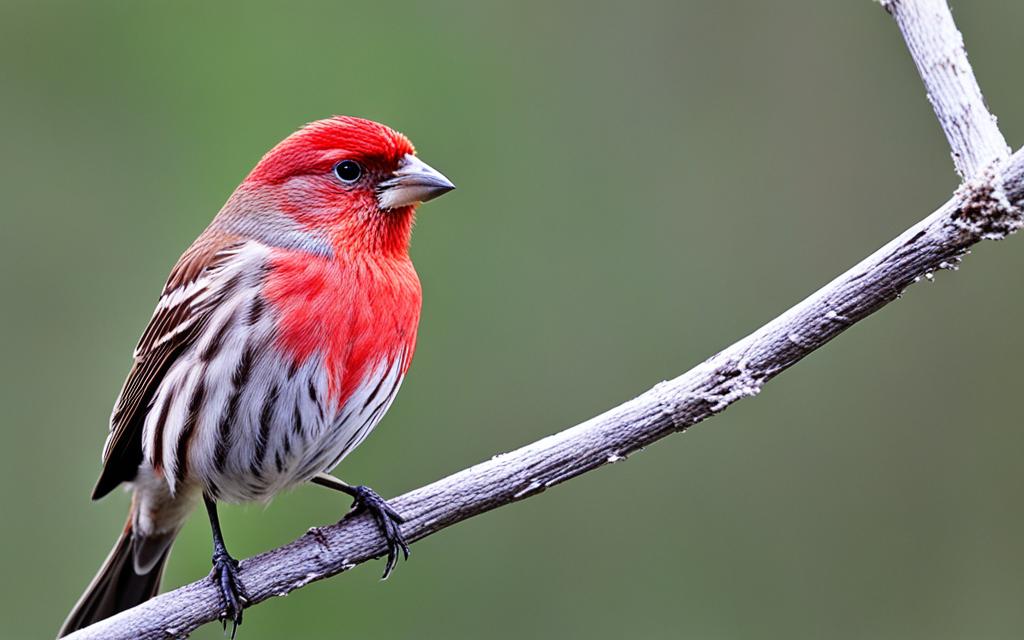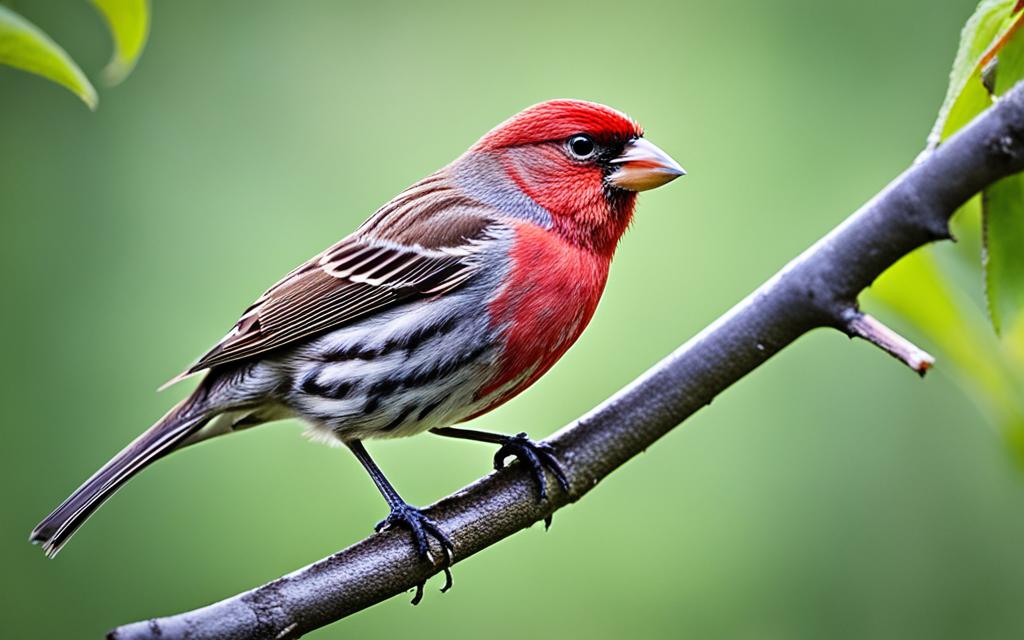As the renowned naturalist John Muir once said, “Tug on anything at all, and you’ll find it connected to everything else in the universe.” This profound sentiment echoes the intricate connections that exist in the natural world, a sentiment that rings true when we consider the captivating presence of House Finches in our own backyards. These vibrant small songbirds, known for their striking red heads and streaky brown plumage, are a common sight at bird feeders across the United States, bringing joy and color to the lives of birdwatchers.
In this comprehensive guide, we’ll explore the fascinating world of House Finches, from their identifying features to their role in the ecosystem. These feathered friends are more than just a fleeting glimpse in the backyard; they are an integral part of the vibrant tapestry of avian life that enriches our outdoor spaces.
Key Takeaways
- House Finches are vibrant small songbirds known for their striking red heads and streaky brown plumage.
- These birds are a common sight at backyard bird feeders, bringing joy and color to birdwatchers.
- House Finches are easily recognizable by their distinctive features, including their small, conical beak and short, notched tail.
- The intensity of a male House Finch’s red coloration can vary, reflecting the individual bird’s access to carotenoid-rich foods.
- House Finches are known for their melodious and varied songs, which can be heard throughout the breeding season.
Introduction to House Finches
House Finches are easily recognizable by their striking appearance. Males sport a vibrant red head, breast, and rump, while females and juveniles have a streaky brown plumage. Both sexes have a small, conical beak and a short, notched tail. These features help distinguish House Finches from other finch species that may visit backyard feeders.
Identifying Features
The most distinctive trait of House Finches is the males’ vibrant red coloration on their head, breast, and rump. This eye-catching plumage is the result of carotenoid pigments in their diet, which the birds are able to metabolize and deposit in their feathers. The intensity of the red color can vary, reflecting the individual bird’s access to carotenoid-rich foods.
Habitat and Range
House Finches are commonly found throughout the United States, with a range that extends from the West Coast to the East Coast. These small songbirds thrive in a variety of habitats, including urban and suburban areas, where they often visit bird feeders in search of food.

The Vibrant Plumage of House Finches
The most distinctive feature of House Finches is the vibrant red coloration of the males’ heads, breasts, and rumps. This eye-catching plumage is the result of carotenoid pigments in their diet, which the birds are able to metabolize and deposit in their feathers. The intensity of the red color can vary, reflecting the individual bird’s access to carotenoid-rich foods.
The Striking Red Heads
The red heads of male House Finches are truly a sight to behold, adding a splash of vibrant color to the backyard landscape. This coloration serves as a visual cue, helping the birds attract mates and establish their dominance within the flock.
Streaky Brown Plumage
In contrast to the males’ striking appearance, the streaky brown plumage of female and juvenile House Finches provides a more subtle, camouflaged look. This coloration helps the birds blend in with their surroundings, offering protection from predators as they forage and nest.

The Melodious Song of House Finches
The melodious song of House Finches is a delightful addition to the soundscape of backyard birdwatching. These small songbirds are known for their varied and complex vocalizations, which can be heard throughout the breeding season. Their songs often consist of a series of short, warbling notes that can be described as a cheerful, ascending “feeeeee-deeee-deeee-deeee.” House Finches also use a variety of call notes, including a distinctive “chur-chur-chur” sound, to communicate with one another and express different behaviors. The captivating songs of House Finches are a true joy for birdwatchers to experience in their own backyards.
House Finches and Bird Feeders
House Finches are known to frequent backyard bird feeders, making them a popular target for birdwatchers looking to attract these vibrant songbirds. By providing a variety of high-quality seed mixes, suet, and nyjer seed, you can create an inviting habitat that will draw House Finches to your outdoor space.
Attracting House Finches to Your Backyard
Placing feeders in areas with nearby vegetation, such as shrubs or trees, can also help make the environment more appealing to these birds. House Finches are attracted to a diverse array of seed options, so offering a mix of sunflower seeds, millet, and nyjer seed can increase your chances of attracting these colorful visitors.
Feeder Preferences
House Finches are particularly fond of nyjer seed, which they often flock to in large numbers. Additionally, providing suet feeders can be an excellent way to supplement the birds’ diet and draw them to your backyard. By catering to the feeding preferences of House Finches, you can create a welcoming and vibrant environment for these beloved backyard birds.




